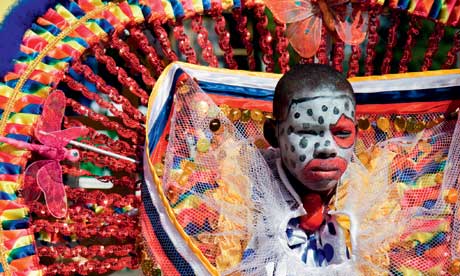
Taking a good portrait shot can be a travel photographer’s biggest challenge. But it’s not just about camera settings, it’s about making friends, too
Photographing people can be incredibly difficult, yet it is one of the most rewarding elements of travel photography. With more than six billion of us on the planet, encounters with people can give you some of the best memories. For me, meeting and interacting with local folk is the highlight of any trip, and photography is the perfect inspiration. I find myself talking to far more people than I would if I was travelling without a camera.
The hardest task is to approach potential subjects and seek their permission to take pictures, but it is totally vital. It is almost impossible to say how you should set about asking someone. It all depends on your character, who you are trying to photograph and what style of picture you’re aiming for. If you have a local guide or speak the language, this can be a massive advantage. But I find that the most important thing is to like people, respect them and be genuinely interested in them.
I have shaken so many hands on my travels and looked so many people in the eye and simply smiled. This often relaxes and engages people – especially as I am big and somewhat rough-looking, so people don’t necessarily expect me to be open and engaging. Humour often helps, as can an air of directness: if I want to take someone’s picture because they have a great face, I will tell them this, either in so many words, or with gestures. If you are turned down, smile and be gracious.
Action portraits – in which people are photographed doing something such as weaving or cooking – can produce very relaxed and natural pictures, as the subject concentrates less on the photographer. Most people become self-conscious when you point a camera at them, so photographing them doing something helps distract them. It also gives you the chance to show some interest in them and what they do. Having a go yourself – and, in my case, inevitably messing it up – is another great way to break down the barriers between you and whoever you want to snap.
It’s possible to shoot your subject from distance with a telephoto lens but I find this to be more intimidating than getting in close. Shooting from a distance also means other people can intrude into your picture, or that another photographer can turn up and distract your subject. If you are close, it is easier to form a bond and communicate with someone.
Conventional wisdom says that you get a more pleasing perspective on someone’s face if you shoot from a slight distance with a moderate telephoto lens (eg, a 90mm) but I often find this perspective is a little flat. I prefer the freedom of approaching them and using a moderate wide or standard lens. I also like to be near enough to interact and shake someone’s hand – if it is culturally sensitive to do so, of course.
One thing to avoid is fussing with your camera when you should be relating to the person you are photographing. Not only will this mean that you lose contact with them, but you are likely to make them feel self-conscious and uncomfortable. Try to select all of the camera settings in advance: set the focus point, select the correct lens, and even work out the exposure. The exposure will remain the same for a given lighting condition, so you can work out a manual exposure before you approach someone, safe in the knowledge that as long as they are lit by the same light, your pictures will be correctly exposed.
Warm directional light at the beginning and end of the day can produce very atmospheric pictures – it picks out details on the face but can also make people squint.
Don’t just wait for conventionally perfect light. Shade or overcast light can produce really good pictures, with detail on the face and no screwed-up faces or half-closed eyes. Shooting in the shade also means that you can take pictures throughout the day – even at midday, when conventional wisdom says is impossible to shoot good pictures. Shady or overcast conditions tend to have less contrast so that if people are wearing hats they won’t have dark shadows obscuring their faces.
Don’t just take one picture and then move on. Work with your subject. Many people blink or pull strange faces when being photographed. Take a few shots in quick succession to ensure that there is at least one with their eyes open. Don’t just snap away haplessly, though. Try to interact with the person. Not only will your pictures be better but you’ll have a much better experience, too.
If shooting digital, break off and show them the preview on the back of the camera. This often fascinates people and helps them to relax. Then, once you have re-established a link, take some more pictures; hopefully your subject will be more relaxed and natural.
Take different shot styles, too: vary from close-up portraits to full length and even much wider environmental shots, which show what your subject is doing and where they are. These pictures can often show more about someone than just what their face looks like.